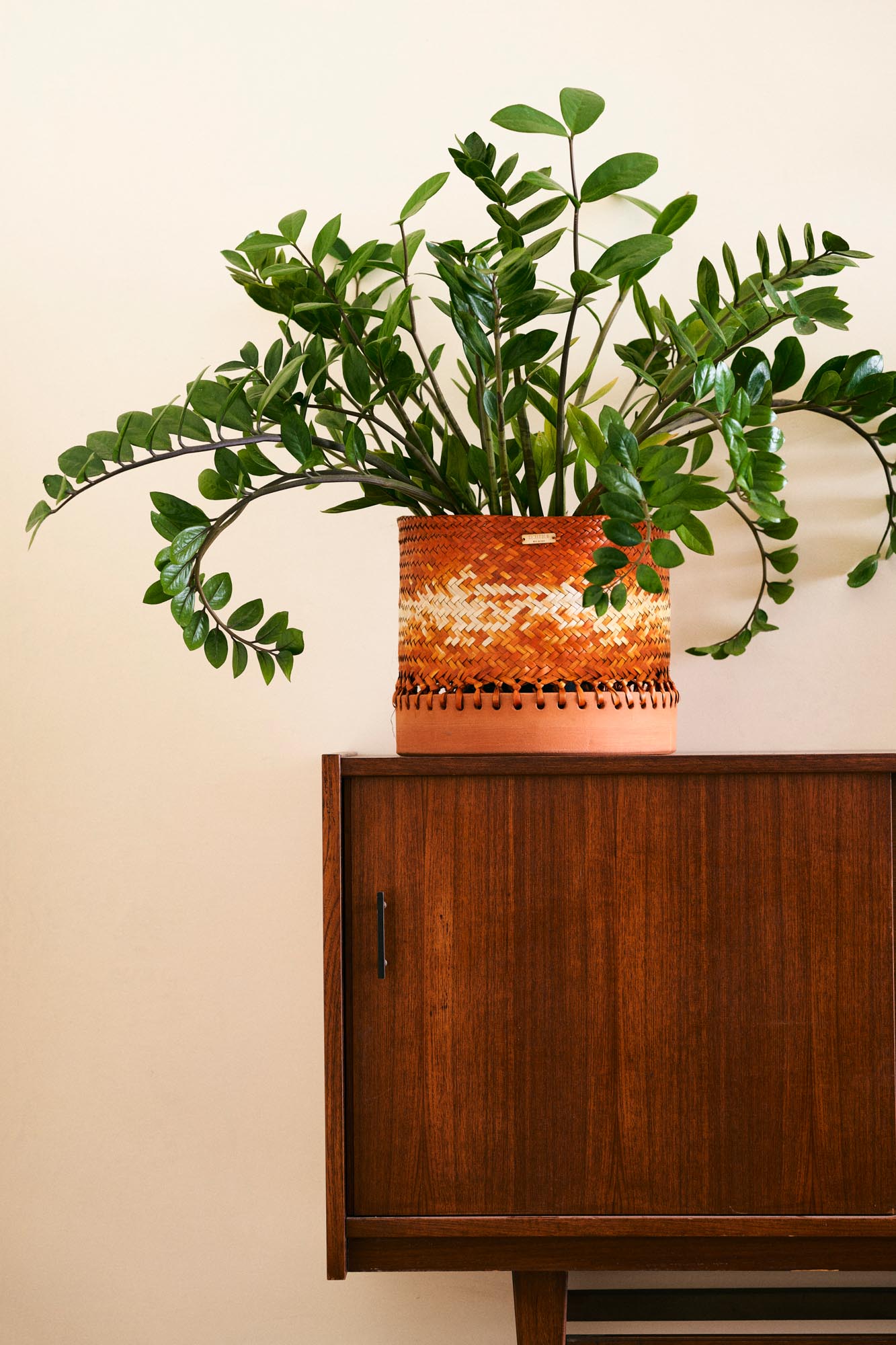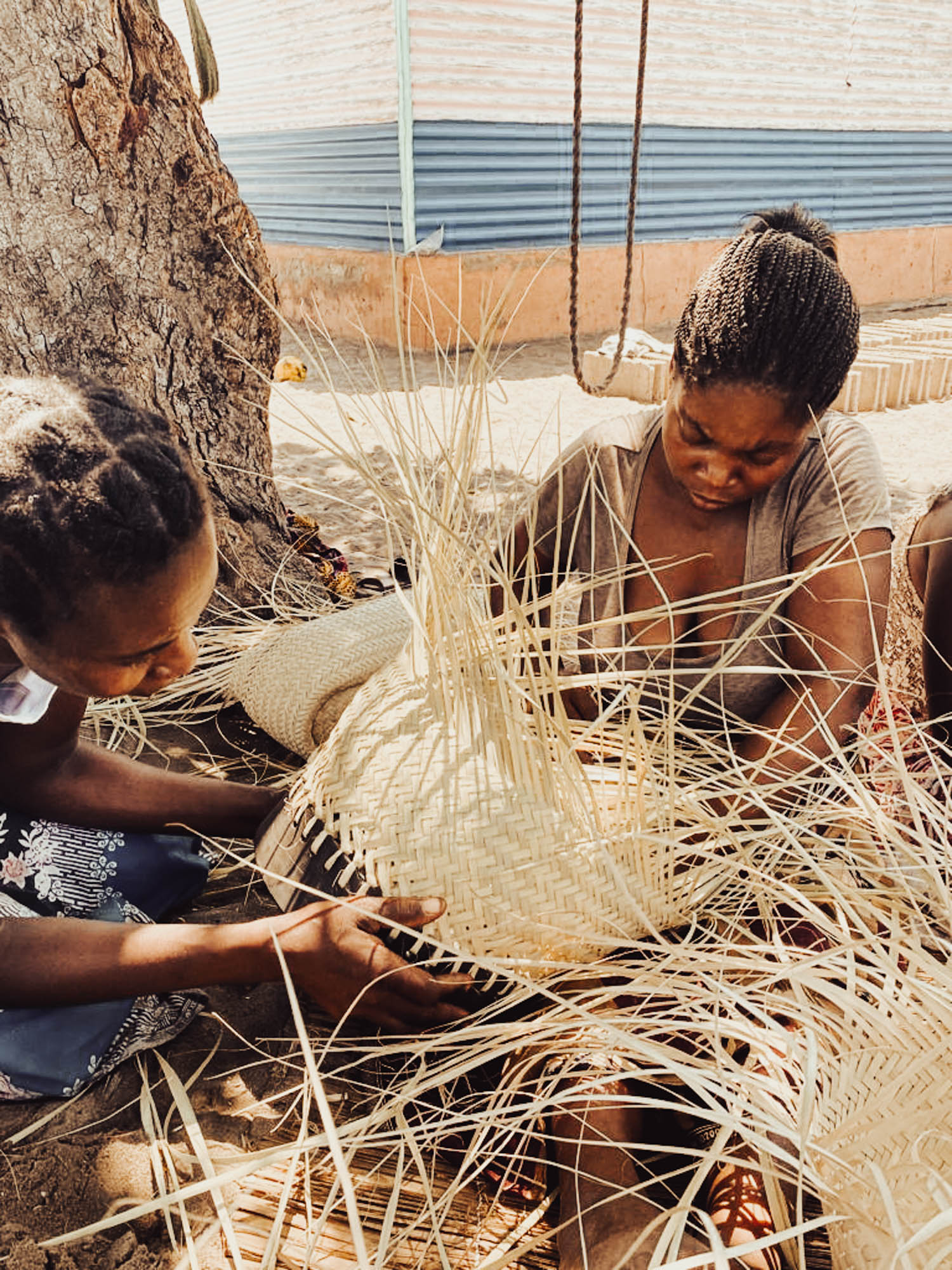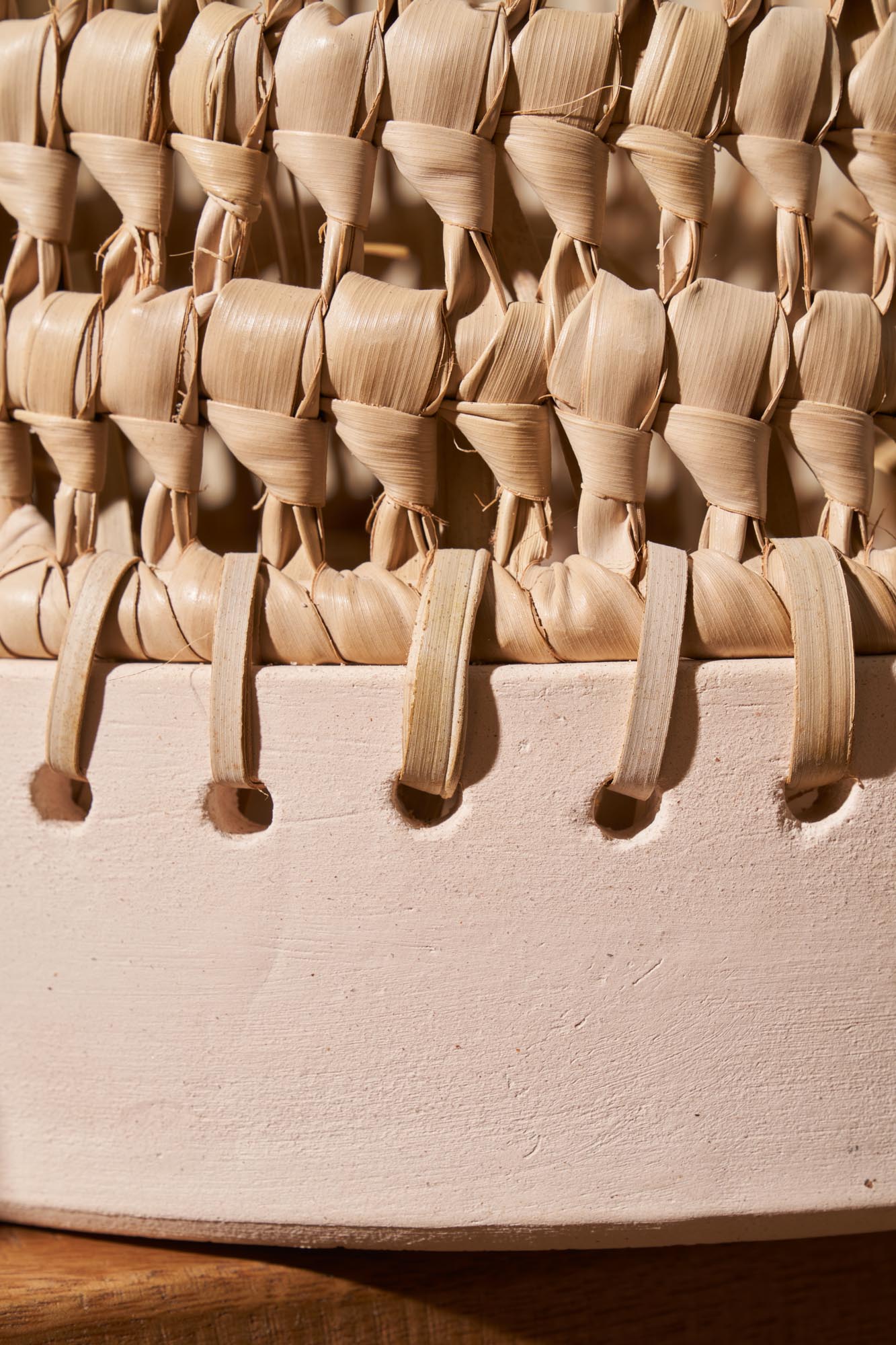Il carrello è attualmente vuoto.

Twill was born from a journey during which the idea arose of incentivizing African crafts, in particular Mozambique palm-leaf braiding. The idea was to also promote abroad the development of a community already dedicated to braiding for the local market, by examining in depth the methods of manually working the palm leaf from braiding to colouring with natural locally sourced dyes.


The raw materials, which are all local, are worked with great professionalism by the expert hands of craftsmen and assembled with refractory clay vessels made in our company.
The Twill project originates from the combination of woven palm leaf and ceramic vases crafted with high-temperature-fired colored refractory clay. This collection features four ceramic vase colors (White, Orange, Green, and Brick) combined with woven palm leaves in various patterns and shades: green, orange, brown, or in their natural color.
The goal is to create a completely novel decorative element with versatile uses.

Our artisans are from communities located in rural areas, predominantly in the southern part of Mozambique in Inhambane province.
Because they are located in remote areas, poorly developed and with poor access to some basic services such as education and health, they have some limitations to their knowledge and communication skills.
The palm leaf is, in many cases, the only raw material and the main means of subsistence for some families and especially for women who are the main artisans of our products.
Given the difficulties of life in these communities, our palm leaf baskets are an important source of income so that families can access some goods and services essential to their subsistence.
The techniques of working the baskets require some skill and experience therefore it is usually an activity that is developed mainly by middle-aged women.
The production of vases can be summarized in 6 stages:

1.
Selection and harvesting of palm leaves
The harvesting of palm leaves must be carefully chosen based on the characteristics of the piece to be made; certain aspects such as the size of the leaf or its thickness vary depending on the purpose.
2.
Drying of palm leaf
After harvesting, the leaf must go through a drying process by exposing it to sunlight for 2 or 3 days depending on the weather conditions.
3.
Preparation of palm leaf
Not all palm leaves are suitable for crafting our vases, which is why the stiffer parts that are not sufficiently pliable for the weaving process are removed.
4.
Coloring of palm leaf (for colored vases)
To create colored vases, the palm leaf is immersed in a container with a mixture of boiling water and locally sourced natural pigments. Subsequently, it undergoes another round of sun drying.


5.
Basket weaving processo
The initial part of the weaving process involves creating a structure that, once joined, takes on a round shape. This structure follows a unique palm leaf weaving technique specific to Mozambique, starting from the bottom and progressing upwards, determining the height of the vase. The woven piece is turned so that the weaving is completed with the trimming of the excess leaf.
6.
Conjunction of the weave to the ceramic pot
The final phase involves tying the palm leaves to the refractory clay pot, a process that requires a lot of attention. Finally, the excess parts are cut, the logo is added, and the packaging for sale is created.
The ceramic base
The ceramic base is made of refractory clay, with the mixture colored in the four variations of the collection: Turquoise, White, Orange, and Brown.
The wet mixture is poured into plaster molds, and after a drying process, the raw vase is handcrafted and finished. All surfaces are sponge-finished and smoothed to create a soft texture. In preparation for the palm leaf weaving, 46 holes are meticulously handmade. The final stage of processing involves a very slow, high-temperature firing process to prevent the formation of cracks or defects on the vase’s surface.

Pot size: ∅ 32 cm h 28-32 cm
Each product includes an elegant rigid box with dimensions 33/33/33 cm